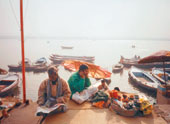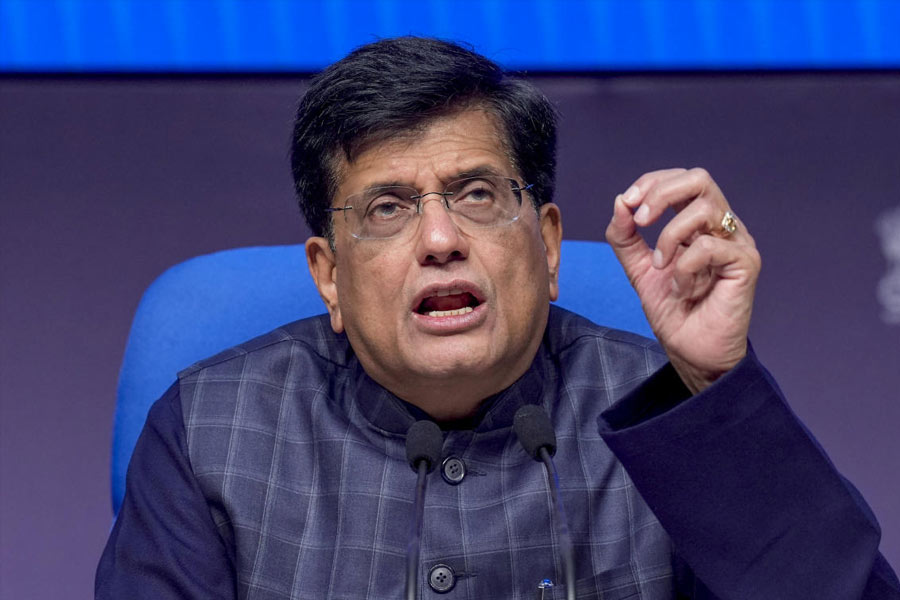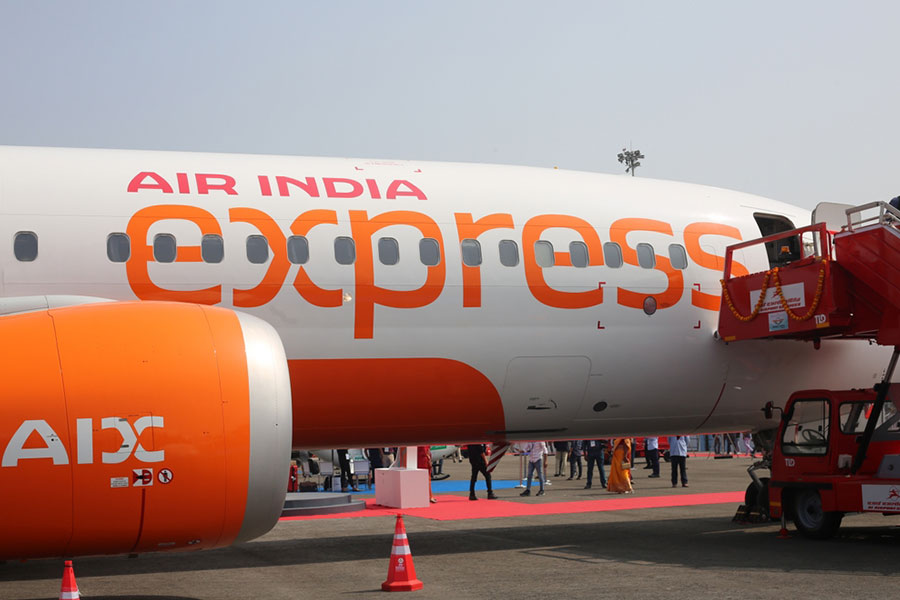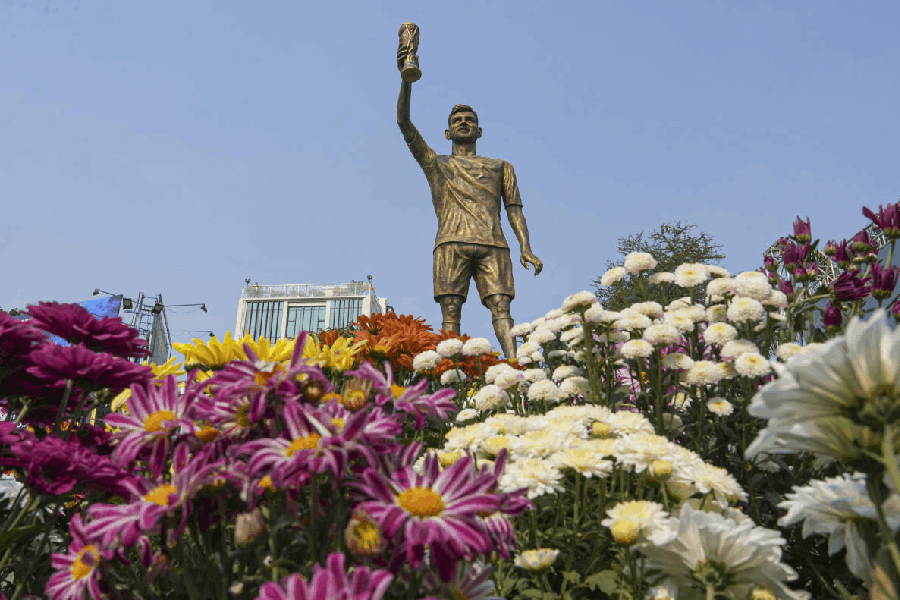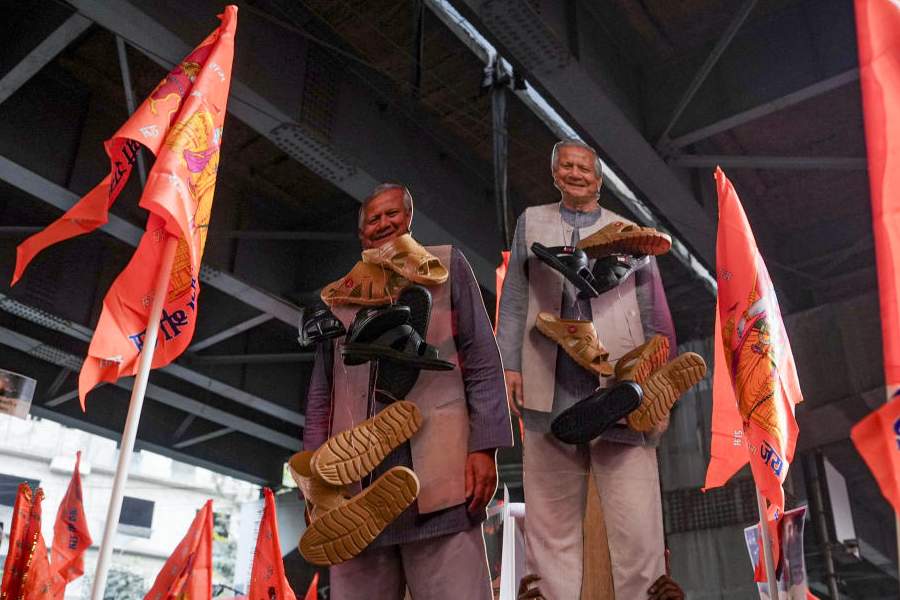 |
 |
 |
| (From top): A puja in progress on the banks of the Ganges; the Varanasi ghats; one of the palaces on the riverside belonging to the Maharaja of Jodhpur |
The ghats look ethereal at dawn, touched by a pink haze just before sunrise. The boatman ferries me along these magical, sweeping stairways that plunge into the river, crowded by thousands of devotees reciting the Gayatri mantra. Then, suddenly, the fragmented rays of the early morning sun strike a confusion of temple spires, minarets of mosques, verandahs and palace galleries, and the projecting oriel windows of ordinary homes like a vivid splash of gold.
And, in one enchanted moment, the ghats come to life with the libation of the holy waters. The common priest and the maligned prostitute, the ordinary householder and the wicked hustler, the aged widow and the young bride plunge into the waters to take a dip, firm in the belief that the atmosphere of devotion hanging over the river, will wash away their sins. When I explain the ritual to a friend who is visiting Varanasi with me, she pulls her Panama closer to her forehead and sighs, “Oh dear, is it that simple? Just a daily dip and you’re squeaking clean, absolved of all peccadilloes? Dahling, how marvellous!”
It’s difficult to explain to a stiff upper lip British bombshell on a tour of India what makes our rituals so endearing. Most foreigners visiting Varanasi for the first time hang around with an aura of tragedy stuck to their freckled, sunburnt faces, which is actually quite comic. There’s no two ways about it ? either you love Varanasi or you hate it. But you can never be indifferent.
Those hell-bent on picking faults, turning up their noses at bullshit without understanding that dung is God and God is dung, are bound to have Occidental minds cluttered with Oriental foolishness. The thing to do is, literally, let go. Then you’re bound to find delight in objects most mundane.
A simple shaft of stone magically transforms into Shiva’s tumescent phallus smeared in sandalwood and littered with petals and bilwa leaves, and worshipped at roadside temples; a peal of temple bells transports you straight to heaven as you remember your past filled with joy and tragedy equalising, at last, under a sky that equalises all things; and the wink of a local Lothario introduces you without much ado to the delightful sins of Dalmandi and the over made-up, bidi-smoking whores with deep cozening eyes and kiss curls plastered to their brows. Varanasi is like Aladdin’s lamp. Give it a good rub and then wait for anything to happen!
Wherever you go, there’s a strange attraction in completely ordinary customs. Life swirls around you with its bewildering, everyday drama. In the narrow lanes and bylanes you could be confronted with the ashen face of a fierce-looking sadhu or the placidity of an ambling bull. Along with the smell of rotting peel and urine you could sniff the fragrance of incense, flowers, the famous maghai paan and, at a pinch, asafoetida. On the riverfront, a muscled wrestler could be swinging his mace with as much devotion as a priest performing the last rites under a reed umbrella, unmindful of a flock of grey-necked pigeons grumbling and pecking at scattered grain nearby.
Walking down a simple gully could bring you face to face with a reality you have never confronted earlier. And, without warning, the notes of Raga Behag played on a shehnai could float across the waves as you sit on the waterfront at dusk, bewildered by the images that keep assaulting your senses wherever you look. Ascending towards the north from the western banks of the holy Ganga, where the river takes a crescent sweep like the moon pinned to Lord Shiva’s locks, Varanasi, with its patterns of temples and moods, its seasons of pilgrimages and festivities takes your breath away.
Considered the oldest living city in the world, Varanasi has about it a quality of timelessness that is truly amazing. It shelters 2,000 temples, worships half a million idols and celebrates at least 563 festivals in 365 days. The precise date of the city’s foundation is unknown, though historians believe it to be approximately 800 B.C.. Like a loved one, the sacred town is called by many names. Kashi and Benaras are the commonest. Even today, it displays the mysterious layering of the Hindu tradition like a palimpsest ? an old parchment that has been written upon and imperfectly erased again and again, without really eliminating its eternal quality. As Reverend Sherring, a mid-19th century missionary, wrote: ‘When Babylon was struggling with Nineveh for supremacy, when Tyre was planting her colonies, when Athens was growing in strength, before Rome had become known, or Greece had contended with Persia, or Cyrus had added lustre to the Persian monarchy, or Nebuchadnezzar had captured Jerusalem, and the inhabitants of Judaea had been carried into captivity, Benaras had already risen to greatness, if not to glory’.
Kashi is the whole world, they say. Everything on earth that is powerful and auspicious is here, in its microcosm. From its many-splendoured avataras as Avimukta, the never-forsaken, to Anandavana, the forest of bliss, Varanasi today is still considered the home of the loveable, temperamental Vishwanath, the all-encompassing deliverer of moksha, and his serene and beautiful consort, Annapurna, the provider of victuals and sustainer of prosperity. Along with them, a multitude of other deities too are visible everywhere. Over the doorways of houses and temples sits the plump elephant-headed Ganesha. Hanuman, son of the Wind God, is just as ubiquitous. On the walls of tea-stalls and tailor shops hang gaudy polychrome icons of Lakshmi and Krishna. And on the whitewashed walls of houses are painted episodes of Shiva’s marriage to Parvati or Rama’s battle with Ravana.
However, everything in Varanasi is not religion. A definite culture of what a typical Benarasibabu would call mauj-masti is part of the city’s ethos. The fun and games happen during musical soirees, poetry readings, numerous melas and fairs and, of course, the Ramlila during the festival of Dusserah every autumn. Numerous poets, scholars, musicians and artisans have made Varanasi their home. It has a thriving university and numerous repositories of art and culture. Silk from Varanasi is world famous and no bride, worth her femininity, can do without a Benaras brocade as part of her wedding trousseau. As a centre for textile manufacture Varanasi certainly holds its own against Shanghai and Cairo. And last but not the least, its savouries and sweets, sold from big shops and roadside stalls, are as legendary, perhaps, as the gods that rule its environs.
Myth and reality merge in a bewildering array of contradictions. Along with the dead being burnt on open funeral pyres is the placid surge of humanity carrying on with their daily chores. Departing from this life in Varanasi is said to assure everyone salvation. Birth and demise here are but two halves of a whole. And the city itself represents all things unsullied on earth, humming with sacred incantations, where in a single sweep, you can glimpse life and death bargaining hard and carrying on with their daily business side by side.
Photographs by the author
A winning formula
 |
 |
 |
| (From top): Sleeping Beauty’s Magic Castle; Mickey Mouse hangs out with fans and an aerial view of Disney’s famed Hollywood Hotel |
When the Paris Disneyland opened 20 years ago, the French newspaper Liberation announced the new arrival with a pair of mouse ears above its masthead. Hong Kong’s South China Morning Post isn’t given to such daring moves, but there’s no doubting that Asia now has a new tourist destination.
The opening of Hong Kong Disneyland earlier this month, inevitably, drew a star cast. Movie star Jackie Chan was his usual cheerful, ebullient self and Chinese vice-premier Zeng Qinghong flew down from across the border to cut the ribbon.
Disney isn’t about to change the formula that has worked so magnificently for the last 50 years. So, the first thing that visitors see as they arrive in Hong Kong Disney is Sleeping Beauty’s Magic Castle, rising like a nursery story come to life. Inside Mickey and the gang are wandering about, amiably posing for digital shutterbugs.
But Hong Kong Disneyland is slightly different from other theme parks around the world. One thing in its favour: Lantau Island, where the park is situated, is very beautiful and you can see tree-covered mountains rising in the distance behind Sleeping Beauty’s castle. Lantau Island is about 35 minutes from Hong Kong’s city centre and 10 minutes by train from the city’s airport.
The world’s newest Disney park has been built on 320 acres of reclaimed land and there are plans for further expansions if the park does as well as expected. It’s unquestionably smaller than other Disney parks around the world but the company reckons this should be just right for the time being.
What are the main attractions? Well, you can walk down Main Street, USA with its gaslights. This part of Disneyland is based on Walt Disney’s memories of America in the 1900s when he was growing up. On the opening day, more than 100 performers took part in a parade that included some of Disney’s top characters and outlined how they evolved over the years.
Then, there’s Fantasyland which is dominated by the Sleeping Beauty Castle. In the Fantasy Gardens you find all the Disney characters wandering about including Mickey and Donald and Winnie the Pooh and his friends. If you are a Winnie the Pooh fan you can even get into what’s called the Enchanted Honeypots and go for a whirl in the Hundred Acre Woods where Pooh and his friends Tigger et al, hang out.
Many American newspapers were underwhelmed by the rides on offer in Fantasyland and thought them too tame. But if you don’t mind riding on the tame side, you can take a spin in Mad Hatter Tea Cups, the Cinderella Carousel and Dumbo the Flying Elephant. No gravity-defying drops here.
Ok, if you’ve had enough of cartoon characters, how about a detour into adventureland and a Jungle River Cruise? Along the way, you’ll meet elephants that have come for a quick splash in the water and there are surprises at every turn. Also, you’ll soon find yourself examining Tarzan’s intricately constructed tree home which is one of the main attractions in Adventureland. The cruise ends with a grand techno finale with fire and water.
Of course, there’s still more for people who can’t get enough. Tomorrowland has the Space Mountain that’s famous for its stomach churning rides. Other rides include Buzz Lightyear Astro Blasters in which you can help the hero of Toy Story to eliminate all his enemies and nasty Emperor Zurg. If you are still craving for adventures in outer space there is Orbitron, which is a gentler ride in flying saucers.
There is also Mickey’s PhilharMagic, in 3D which shows parts of Disney’s classic movies like Aladdin and Beauty and the Beast. The 3D glasses make it seem as if the characters are right in front of you.
Disney’s theme parks are famous as places where you can heap your plate high. And Hong Kong Disney is no exception. In fact, Indian travellers will probably prefer Hong Kong’s cuisine to anything on offer in Florida and California. Here you can eat everything from dim sum which comes from the Steam Kitchen to Kashmiri curry (from the Curry Kitchen, naturally).
Overnight guests get the usual Disney treatment. There are two ornate themed hotels to choose from if you want to stay. The bigger of the two is the 600-room Hollywood Hotel, designed to bring back memories of Hollywood during its heyday in the 1930s and ‘40s.
The Hong Kong Disneyland Hotel is a six-storey Victorian-style resort with 400 rooms. And, if you want to get married in Disney-style, there’s a garden gazebo for such ceremonies.
How do Indian tourists get there? Cathay Pacific flies four days a week directly to Hong Kong. From Mumbai there are Cathay flights to Bangkok and on to Hong Kong. Tourists from Calcutta would do best flying to Bangkok, then to Hong Kong.
Entry into the park costs HK$350 (Rs 1,980) on weekends for adults and HK$295 (Rs 1,670) on weekdays. Children: HK$250 (Rs 1,410) on weekends and HK$210 (Rs 1,190) on weekdays.
My favourite holiday
 |
Nikhil Mehra,
fashion designer
When I think of my favourite place to holiday in, it’s Mauritius every time. I holiday there each year but its charms have never paled, in fact, I’d go there more than once a year if I could. I love the sea and am very much a water person. Besides, I like water sports and Mauritius offers unlimited opportunities to indulge this passion. Also, it’s a veritable melting pot of cultures, cuisines and people — the food is awesome and the island feels like it’s always on holiday. It’s the only place on earth where you can find Indians speaking fluent French — and I, for one, find the effect totally exotic.
Apart from this, the south of Italy is also one of my favourite holiday places. There’s so much history strewn around this part of the globe — and besides, there are a number of great holiday spots with sun, sand and great food thrown in for good measure. It’s the perfect place for a relaxed holiday with long, rambling hikes and siestas in the sun. And of course, the best food and wine money can buy.
Route map
It’s holiday season and every hotel chain appears to be unleashing attractive packages to woo guests. The Oberoi Group has a multi-pronged attack planned this winter. Wildflower Hall, its serene resort in the Himalayan reaches, is offering some relatively easy-on-the-pocket tariffs from the beginning of this month through winter. There’s more: Shimla’s Oberoi Cecil is offering an adventure package while meetings and conferences can be booked at the Vilas properties for groups of over 16.
But if it’s a spa in the Himalayas that you want to try out, check out Wildflower Hall. As always, you can fly to Wildflower Hall on Oberoi Air Charters (gratis) from Delhi. A couple gets to pay Rs 14,000 per person per night for two nights, Rs 11,500 per person per night for three nights and Rs 10,000 per person per night for four nights. The price throws in accommodation in a deluxe room, breakfast and dinner and a 25 per cent discount on all spa therapies.
But if you are travelling in a group of four, a special rate applies: Rs 12,500 per person per night for two nights, Rs 10,250 per person per night for three nights and Rs 10,000 per person per night for four nights. The price also includes door-to-door transportation to the resort including car transfers to the airport and air transfers from New Delhi to Shimla and back. The spa is a major draw and the discounts will perhaps make the massage even more energising.

